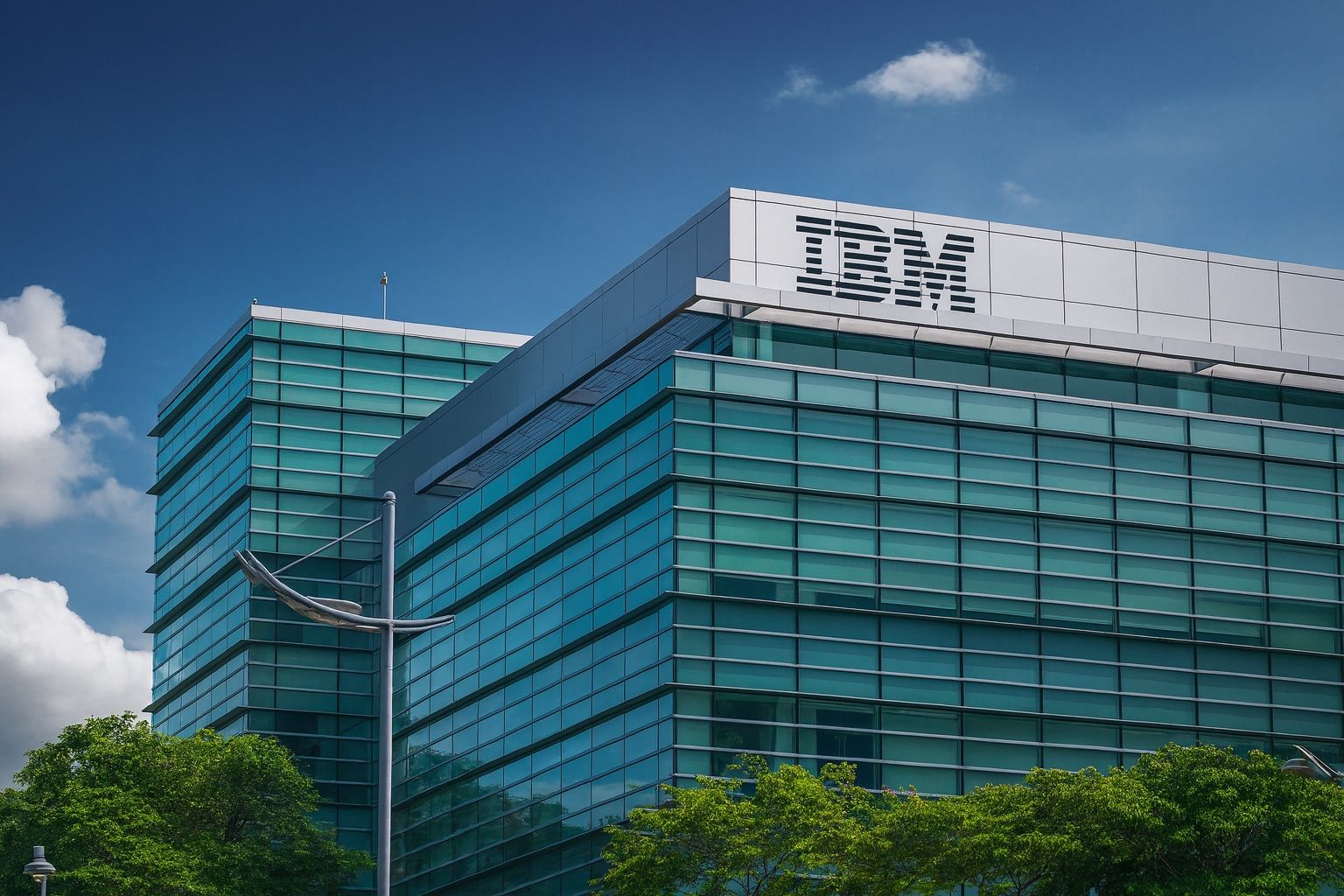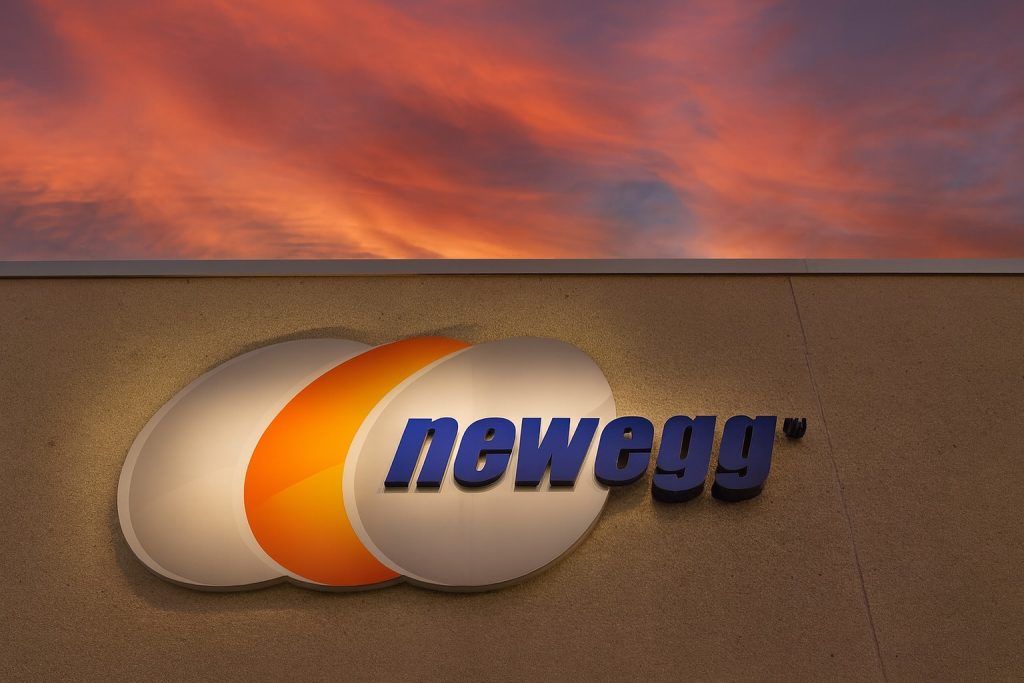- Key Facts: IBM reported a strong Q3 (Sept) with revenue $16.3 billion (+9% YoY [1]) and raised full-year guidance (now >5% revenue growth, ~$14B free cash flow [2]). Software (+10%) and AI-powered infrastructure (+17%) led the gains [3] [4]. Shares initially dipped on Oct 22 (Red Hat cloud growth slowed) but then spiked ~8.2% on Oct 24 to $308.32 — a 3-year high [5]. Analysts are mixed: Wedbush calls IBM “well-positioned” for AI/cloud (Outperform, $325 PT) [6] and BofA lifted its target to $315, while RBC cut its to $300 (Outperform) after earnings. Skeptics note the stock is “priced to perfection” [7] and warn Red Hat weakness “will disappoint” some investors [8]. IBM’s quantum news (running an error-correction algorithm 10× faster on AMD chips [9]) drew particular excitement, sending both IBM and AMD to record highs. IBM is now up about 40% in 2025 [10], one of the Dow’s best performers.
IBM’s Oct. 22 earnings beat raised hopes. The company reported $16.3B in Q3 revenue, up 9% from a year ago [11], driven by double-digit gains in high-end hardware and AI software. CEO Arvind Krishna said innovation and investments are paying off. CFO James Kavanaugh noted “new innovation, the strength and diversity of our portfolio, and our disciplined execution” fueled double-digit EBITDA growth and strong free cash flow [12]. IBM delivered Non-GAAP EPS of $2.65, well above the $2.45 analysts expected (an 11% YoY increase [13]). All segments grew: software (inc. hybrid cloud/Red Hat) +10%, consulting +3%, infrastructure (AI mainframes & IBM Z) +17% [14] [15]. With these results, IBM raised full-year guidance to >5% revenue growth (constant currency) and about $14 billion in free cash flow [16].
However, the beat was tempered by a cooling in cloud-related sales. Growth in the Red Hat (hybrid cloud) unit slowed to 14% in Q3 (from 16% in Q2) [17]. After hours on Oct 22, IBM shares briefly fell ~5% on Wall Street over these worries. “A slowdown in Red Hat revenue and software sales … will disappoint some that were hoping for accelerating growth in what is a high-margin segment,” warned Michael Ashley Schulman of Running Point Capital [18]. Synovus Trust portfolio manager Dan Morgan echoed the caution: “The stock is priced to perfection… there was little wiggle room for any metric to come up short” [19]. Still, other analysts saw plenty to like. Melius Capital’s Ben Reitzes noted Red Hat bookings are up ~20%, and even if revenue lagged, “the case for improvement [is] compelling” [20]. Overall, IBM’s Q3 sales ($16.33B) beat the $16.09B consensus, with GAAP EPS $1.84 vs. a year-ago loss [21].
Earnings Report and Guidance: IBM’s CEO and CFO emphasized strong execution. In the press release, Kavanaugh said the quarter’s results reflect “strength and diversity” in the business [22]. The company now expects more than 5% revenue growth in FY2025 (versus previous 5%), helped by a $1.5 point currency tailwind [23]. The $1.68 quarterly dividend was maintained. Investors also noted IBM’s expanding AI pipeline (e.g. new WatsonX tools and Anthropic partnership) as a tailwind. Wedbush analysts, for example, wrote that IBM is “well-positioned to capitalize on the current demand shift for hybrid and AI applications as well as quantum computing” [24]. They kept an Outperform rating with a $325 price target, calling IBM “a dynamic name to own in the AI Revolution” [25]. Bank of America likewise lifted its 12-month target to $315 (Buy) after seeing a “solid” quarter, whereas RBC trimmed its target to $300 (Outperform) on a more cautious outlook. In summary, Wall Street’s consensus sees some upside from AI-driven growth, but requires follow-through in software/cloud to justify IBM’s lofty valuation.
Stock Market Reaction: The stock’s own performance reflected the mix of hype and caution. After an initial slide post-earnings, IBM’s shares rebounded sharply. On Oct. 24 they surged about 8.2% to $308.32 [26]. That spike followed an Oct. 24 news release (below) and closed the day at a three-year peak. In fact, by month-end IBM had become one of the Dow Jones’ top gainers in 2025, up roughly 40% year-to-date [27]. Traders noted that unlike some high-flying AI stocks, IBM has reported real profit and cash-flow gains, which fueled buying. Still, skeptics question how much more room there is to run without faster cloud growth. As a Wall Street strategist put it, any misstep now can disappoint, since “there was little wiggle room” [28].
Quantum Computing News: Adding to the excitement, on Oct. 24 IBM announced a breakthrough in quantum computing. Researchers ran IBM’s quantum error-correction algorithm on a standard AMD FPGA chip and achieved 10× the required speed [29]. This was described internally as “a big deal” because it makes real-time error correction – a key step toward practical quantum computers – much more affordable. The quantum news sent both IBM and AMD shares to new highs: IBM at $308 (closing record) and AMD up ~8% to $253 intra-day [30]. Analysts and media hailed this as a “quantum leap” for IBM’s technology roadmap [31]. Importantly, the announcement came a year ahead of schedule on IBM’s 2029 quantum roadmap [32]. Investors interpret the success as validation of IBM’s strategy to marry its quantum leadership with AI-era hardware (the IBM/AMD partnership). However, some caution this is still early-stage technology: turning “quantum hype” into revenue will take time. For now, the breakout underscores why traders say IBM’s future growth could come from AI and quantum computing, not just legacy services.
Outlook and Forecast: With the stock near cycle highs, attention turns to whether IBM can keep up the momentum. Key catalysts will be sustaining cloud bookings and monetizing its new AI and quantum capabilities. IBM’s CFO Kavanaugh insists the company has the cash and “disciplined execution” to invest in those areas [33]. Wedbush, for instance, believes IBM can hit a solid Q4 as clients “accelerate AI demand with WatsonX” [34]. But Morgan Stanley (cited by media) has already warned that any continued software underperformance could pressure next year’s outlook. In any case, analysts’ 1-year price targets are now clustered in the $250–$350 range (depending on firm), reflecting both the optimism and caution. As one observer noted, IBM investors are betting on a turnaround: the shares “bode well for Wall Street” if Big Blue can keep delivering breakthroughs [35] [36].
Sources: IBM Q3 press release [37] [38]; Reuters and Dow Jones news (Arsheeya Bajwa, Adriano Marchese) [39] [40]; ProactiveInvestors (Wedbush note) [41] [42]; TechStock² analysis of IBM/AMD quantum news [43] [44]; MarketScreener consensus summaries (Wedbush, RBC, BofA updates) [45].
References
1. newsroom.ibm.com, 2. newsroom.ibm.com, 3. newsroom.ibm.com, 4. newsroom.ibm.com, 5. ts2.tech, 6. www.proactiveinvestors.com, 7. www.reuters.com, 8. www.reuters.com, 9. ts2.tech, 10. ts2.tech, 11. newsroom.ibm.com, 12. newsroom.ibm.com, 13. newsroom.ibm.com, 14. newsroom.ibm.com, 15. newsroom.ibm.com, 16. newsroom.ibm.com, 17. www.reuters.com, 18. www.reuters.com, 19. www.reuters.com, 20. ae.marketscreener.com, 21. ae.marketscreener.com, 22. newsroom.ibm.com, 23. newsroom.ibm.com, 24. www.proactiveinvestors.com, 25. www.proactiveinvestors.com, 26. ts2.tech, 27. ts2.tech, 28. www.reuters.com, 29. ts2.tech, 30. ts2.tech, 31. ts2.tech, 32. ts2.tech, 33. newsroom.ibm.com, 34. www.proactiveinvestors.com, 35. ts2.tech, 36. www.reuters.com, 37. newsroom.ibm.com, 38. newsroom.ibm.com, 39. www.reuters.com, 40. ae.marketscreener.com, 41. www.proactiveinvestors.com, 42. www.proactiveinvestors.com, 43. ts2.tech, 44. ts2.tech, 45. www.marketscreener.com







